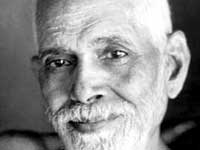Just In
- 24 min ago

- 34 min ago

- 1 hr ago

- 1 hr ago

Don't Miss
- Sports
 IPL 2024: No Place For Sanju Samson in Irfan Pathan's 15-Member Indian T20 World Cup Squad
IPL 2024: No Place For Sanju Samson in Irfan Pathan's 15-Member Indian T20 World Cup Squad - Movies
 Arti & Dipak Sangeet: Bride-To-Be Turns Up Emotions As She Dedicates Song To Krushna Abhishek, Watch Video
Arti & Dipak Sangeet: Bride-To-Be Turns Up Emotions As She Dedicates Song To Krushna Abhishek, Watch Video - News
 ByteDance To Sell TikTok Or Face Ban In US: Senate Passes Bill
ByteDance To Sell TikTok Or Face Ban In US: Senate Passes Bill - Automobiles
 Kia Carens Earns Mixed Safety Ratings Amidst Growing Popularity In India
Kia Carens Earns Mixed Safety Ratings Amidst Growing Popularity In India - Finance
 Okay Play India Posts 12.79% Revenue Growth In Q4 After 1:10 Stock Split Approval
Okay Play India Posts 12.79% Revenue Growth In Q4 After 1:10 Stock Split Approval - Education
 Karnataka SSLC Class 10 Result, Tentative Date, How and Where to Check KSEAB Result 2024
Karnataka SSLC Class 10 Result, Tentative Date, How and Where to Check KSEAB Result 2024 - Travel
 Fly in Luxury: 10 Ways to Get Free Flight Upgrades
Fly in Luxury: 10 Ways to Get Free Flight Upgrades - Technology
 Realme Narzo 70 & Narzo 70x Launching Today in India: Check Price, Specs, Live Stream Details
Realme Narzo 70 & Narzo 70x Launching Today in India: Check Price, Specs, Live Stream Details
Ramana Maharshi's Biography-Early Days

The Vedic mantras once again derived their authenticity and validity from the life of this sage (Ramana Maharshi's biography), whose compassion and love extended to all beings — humans and sub-humans alike — in as much as he perceived the same Self in all beings and all beings in the Self.
Venkataraman — that was the Ramana Maharshi's early name — was born in 1879 at Tiruchuzhi, a village in the Madurai district of Tamil Nadu. His father Sri Sundaram Iyer was a pleader, and had three sons and a daughter. Venkataraman, his second son, grew up a normal, healthy boy. He was sent to a local school and later to a school at Dindigul. When Venkataraman was twelve his father passed away. The children went to live with their paternal uncle at Madurai. Their mother, presumably, went to Manamadurai and stayed with her relatives.
At Madurai Venkataraman was first sent to Scott's Middle School and then to the American Mission High School. There was no sign during his school days of his ever becoming a scholar. But he had an astonishingly retentive memory which enabled him to repeat a lesson on hearing it once. Another thing unusual about the boy was his abnormally deep sleep. His schoolmates never dared touch him when he was awake, but if they had a grudge against him they would carry him while asleep wherever they liked, beat him to their hearts' content and place him back on his bed. Venkataraman would not know anything until they told him the next day.
When he was sixteen, he met an elderly relative and asked him where he came from. The old man replied: 'From Arunachala.' Venkataraman had known that Arunachala was a very sacred place and the sudden realization that it was a real, tangible place on earth overwhelmed him with awe. Some days later he chanced to come across a copy of the Periyapuranam, a Tamil classic on the lives of the sixty-three Tamil saints called Nayanmars. As he read the book he was overwhelmed with ecstasy that such faith, such yearning and such love for God were possible and that such a divine dimension existed in human life. The saints' renunciation and divine love inspired him with a desire to emulate them.
About
the
author
Swami
Yuktatmananda
Swami Yuktatmananda of Ramakrishna Mission Vidyalaya, Coimbatore, is a monk of the Ramakrishna Order. This article is an excerpt from His 'The Holy Beacon of Arunachala,' a beautiful attempt to unravel Bhagavan Ramana Maharshi's biography-Early Days. The biography states that Ramana was the embodiment of the highest truth.
-
 yoga spiritualityDid You Know That One Shloka Which Carries The Essence Of The Bhagavad Gita?
yoga spiritualityDid You Know That One Shloka Which Carries The Essence Of The Bhagavad Gita? -
 yoga spiritualityAct But Don't React! The Secret Principle For A Happy And A Calm Life
yoga spiritualityAct But Don't React! The Secret Principle For A Happy And A Calm Life -
 yoga spiritualityRamana Maharshi On Meditation: Meditate Or Drive Away The Mosquitoes?
yoga spiritualityRamana Maharshi On Meditation: Meditate Or Drive Away The Mosquitoes? -
 yoga spiritualityWhat Is Meditation? Ramana Maharshi Decodes It With Dosa Eating!
yoga spiritualityWhat Is Meditation? Ramana Maharshi Decodes It With Dosa Eating! -
 ramana maharshiSolving Problems-Self Enquiry, The Solution To All Problems
ramana maharshiSolving Problems-Self Enquiry, The Solution To All Problems -
 ramana maharshiSolving Problems-For Whom Is The Problem?
ramana maharshiSolving Problems-For Whom Is The Problem? -
 ramana maharshiSolving Problems : Where Is Happiness?
ramana maharshiSolving Problems : Where Is Happiness? -
 ramana maharshiSolving Problems The Ramana Way : 'Where Is The Problem?'
ramana maharshiSolving Problems The Ramana Way : 'Where Is The Problem?' -
 ramana maharshiSolving Problems The Ramana Way: What Is A Problem?
ramana maharshiSolving Problems The Ramana Way: What Is A Problem? -
 ramana maharshiRamana Maharshi's Definition Of Atheist
ramana maharshiRamana Maharshi's Definition Of Atheist -
 ramana maharshiRamana Maharshi's Biography-His Teachings
ramana maharshiRamana Maharshi's Biography-His Teachings -
 ramana maharshiRamana Maharshi's Biography-Spiritual Sayings
ramana maharshiRamana Maharshi's Biography-Spiritual Sayings


 Click it and Unblock the Notifications
Click it and Unblock the Notifications




